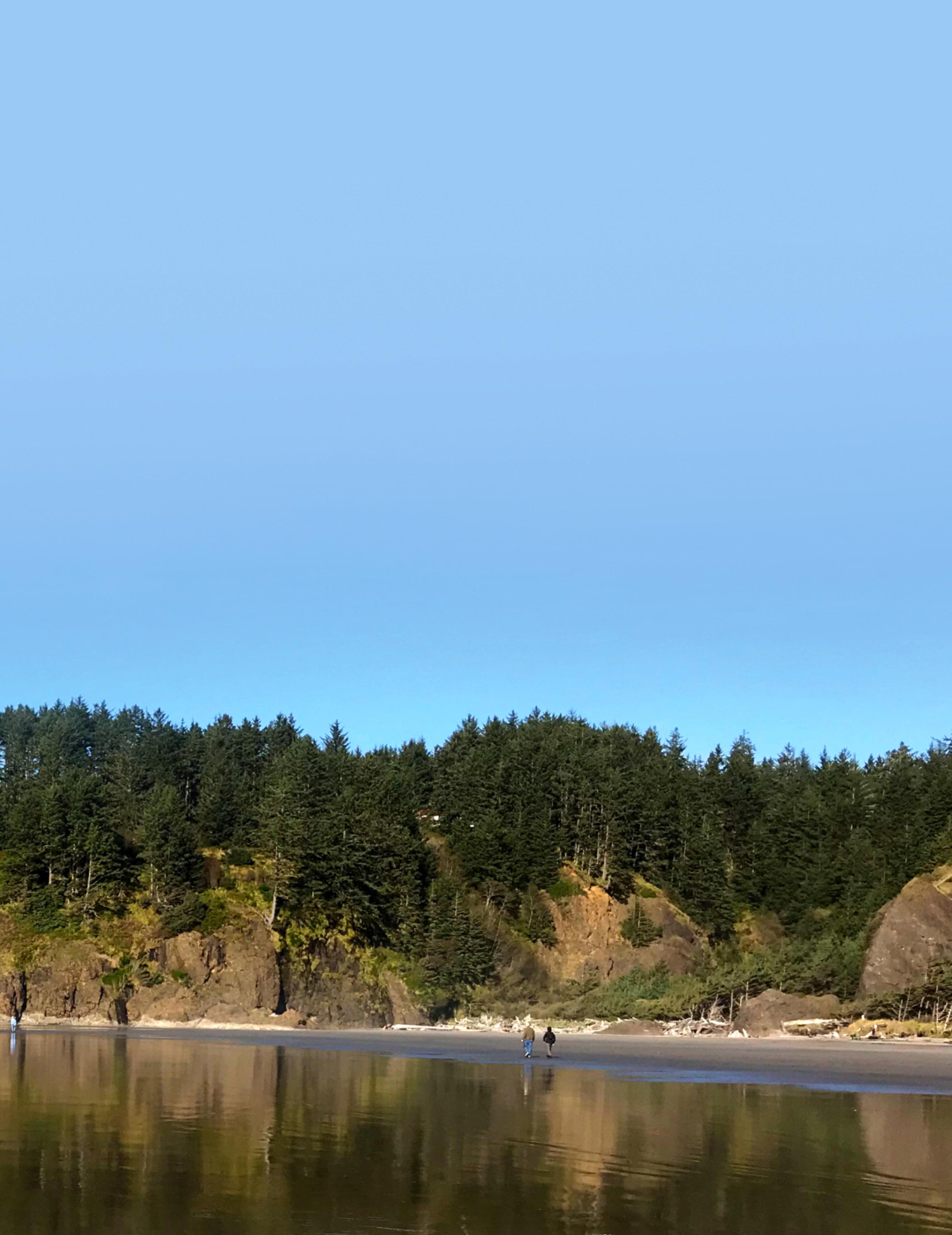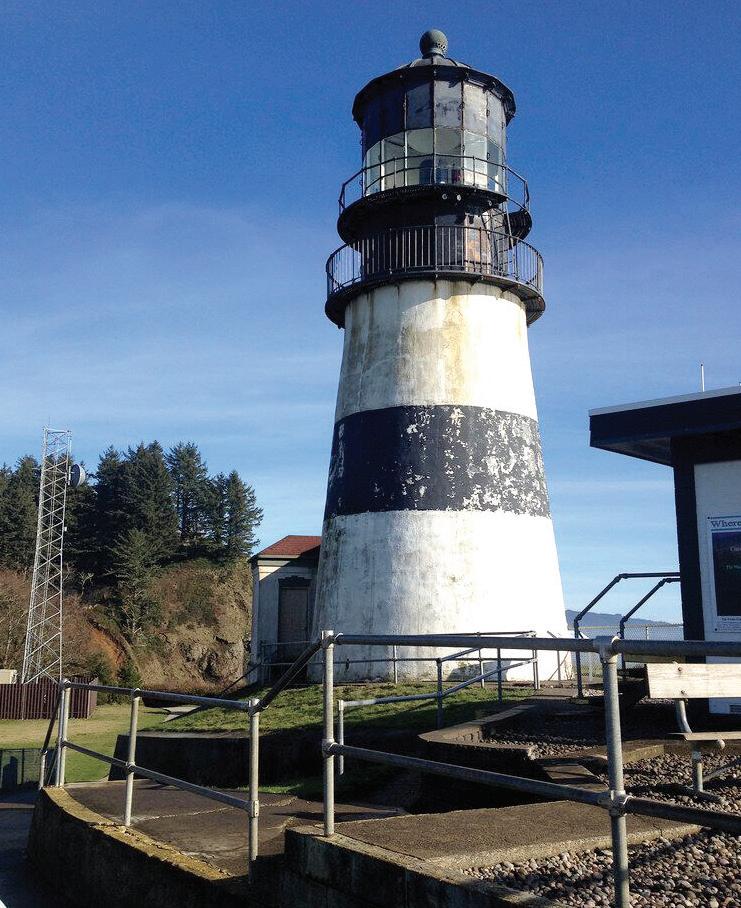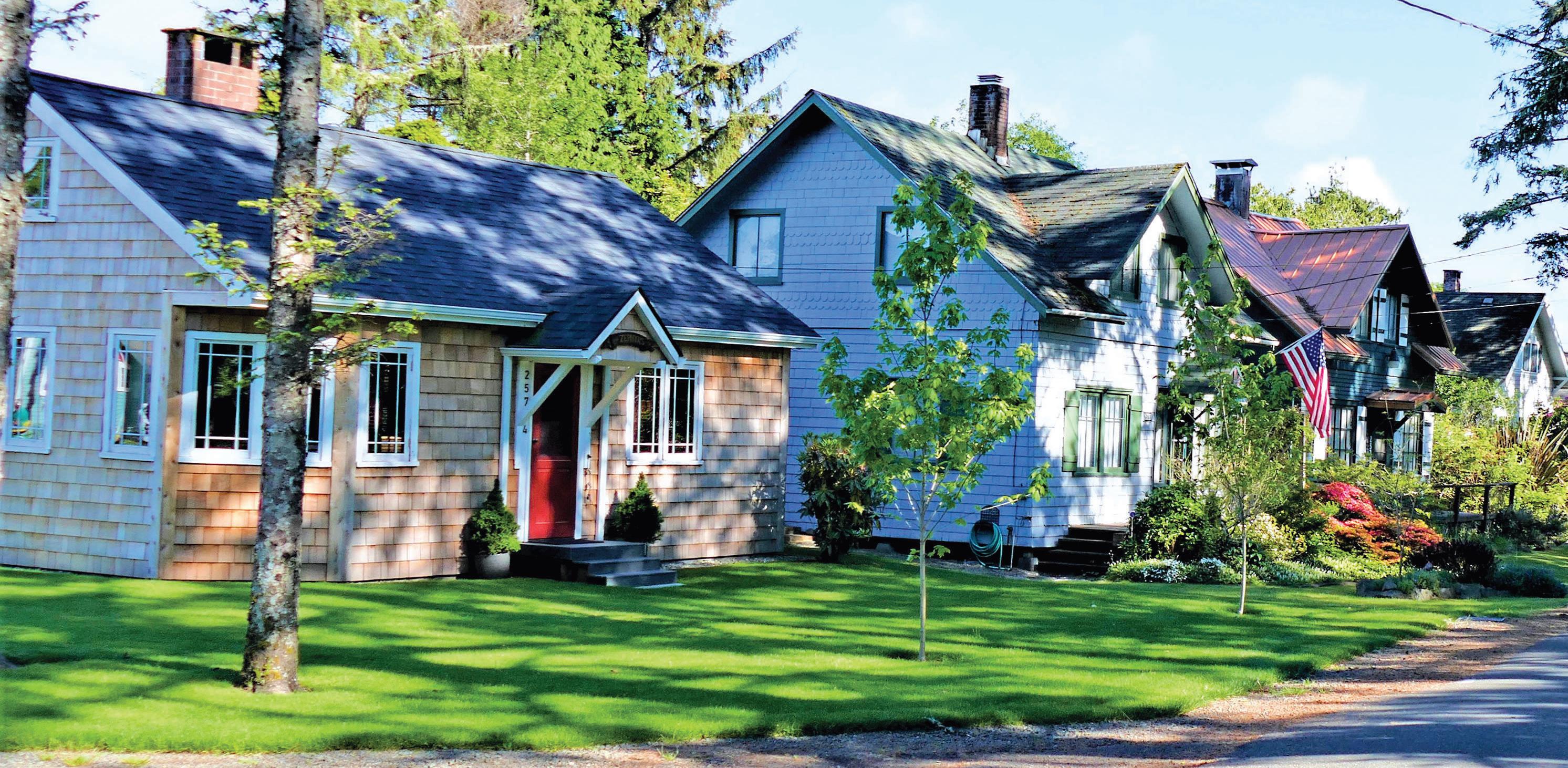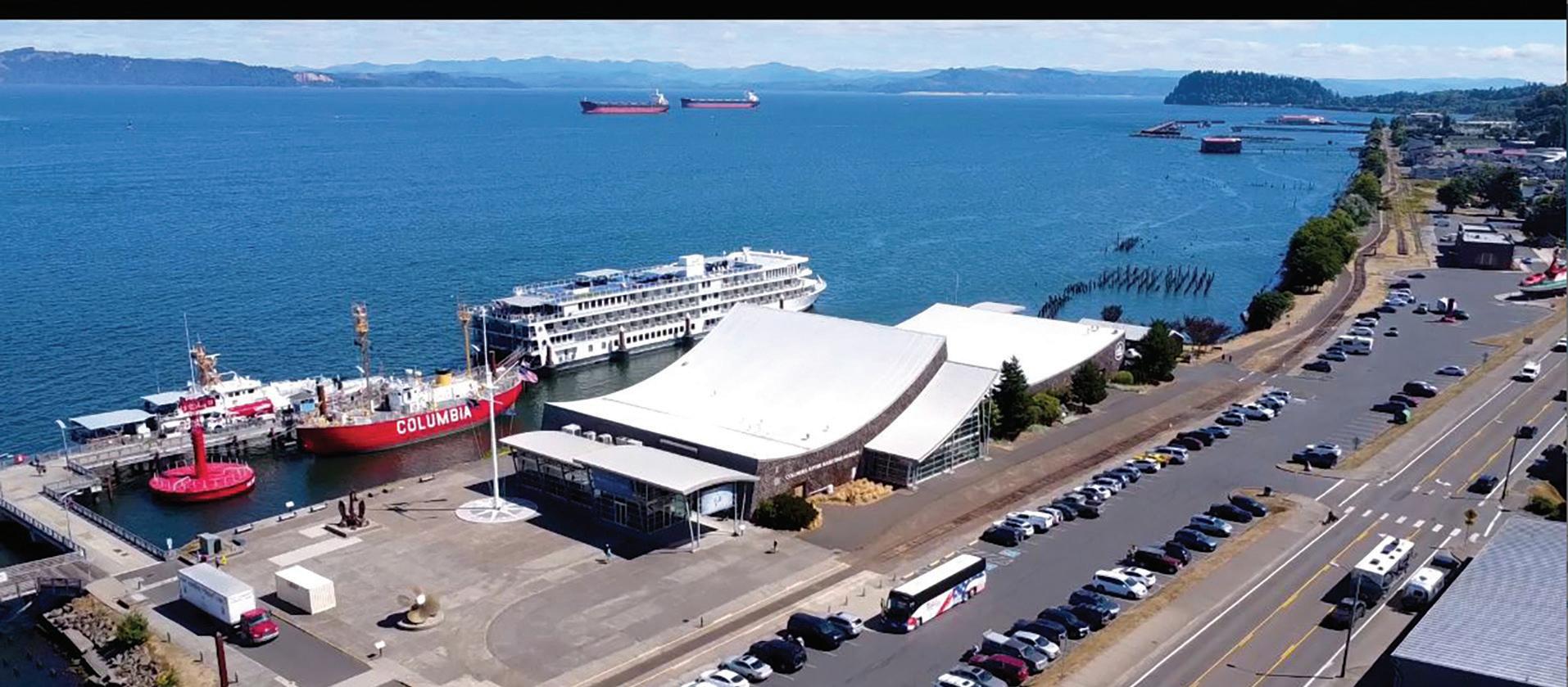


















Framed by one of the Northwest’s most scenic harbors, Ilwaco offers an experience of humanity’s long partnership with the Columbia River and the Pacific Ocean.
Ilwaco’s proud maritime tradition spans thousands of years, first in the cedar canoes of the Chinook Indian people, continuing on through the tall-ship era, up to the sailboats and fishing fleets of today.
Framed by one of the Northwest’s most scenic harbors, Ilwaco offers a firsthand experience of humanity’s long partnership with the Columbia River and the Pacific Ocean.
Summer and fall offer unparalleled opportunities to get out on the water, either in the pursuit of fish, or just to partake in the sights and sensations of one of the world’s mightiest rivers and neighboring ocean waters.
If fishing is your heart’s desire, public boat launches provide easy access to the water. No boat? No problem: there are charter offices to fulfill any angler’s request. North Jetty in Cape Disappointment State Park — part of Ilwaco — is an acclaimed place to cast a line or toss a recreational crab pot.
Wildlife and bird watching opportunities are remarkable. Seals, sea lions and whales all are spotted offshore. Humpbacks and orcas sometimes even make their way into the Columbia. White pelicans and bald eagles are among our rock-star avian species.

A full-service marina and boatyard and a waterfront promenade for strolling make Ilwaco Harbour Village a stop you don’t want to miss. Unique gift shops with that special something you can’t find anywhere else and art galleries for that one-of-a-kind treasure dot the waterfront.
May through September, the Port of Ilwaco hosts a Saturday Market that attracts vendors, craftspeople and musicians from around the region. Pick from the freshest produce, baked goods and plants. Wonderful crafts and handiwork abound with something new every weekend. It is open every Saturday, rain or shine, all summer long from 10 a.m. to 4 p.m.
Visit the award-winning Columbia Pacific Heritage Museum, 115 SE Lake St., to learn all about our amazing place, including the Ilwaco Railway & Navigation Co. Open Wednesday-Saturday 10 a.m.-4 p.m.
Get more information at: ColumbiaPacificHeritageMuseum.org
Sailboats motor out of the Port of Ilwaco on a sunny spring morning en route to the Pacific Ocean. — JANE WEBB PHOTO

There are three splendid beaches for beachcombing or just going for a stroll. Colorful painted crab-pot floats are a frequent find in midwinter.
Waikiki Beach is located where the North Jetty meets the rocky cape. This is one of locals’ favorite spots for storm watching and photography because the waves crash on the cape here with the Cape Disappointment Lighthouse in the background.
Benson Beach is the sandy stretch from the North Jetty to North Head. Hikers can enjoy the lack of vehicles, the huge driftwood trees and view of the North Head Lighthouse.
Beards Hollow is on the southern stretch of the Peninsula’s main beach — north of North Head — offers visitors a chance to view tide pools at low tide near the historic “Fishing Rocks,” or take the Discovery Trail north to Long Beach or east to Ilwaco.
The Confluence Project site is one of seven locations on the Columbia River where internationally famed artist Maya Lin has created places to pause and reflect. Using the language of the Chinook people and members of the Lewis and Clark Expedition, the Confluence artworks put the explorers into perspective, encouraging the visitor to re-consider the cultural and natural layers of history found on the Lower Columbia. The Cape Disappointment installation includes a basalt fish-cleaning table, the Baker Bay viewing platform, several short trails and an amphitheater with a view of the ocean. Concerts are presented during the summer.

Long Beach displays an eccentric charm, and has bustling summer sidewalks, many different festivals, and, of course, its soaring kites.
Long Beach is the only place on the planet with Jake the Alligatorman.
The star attraction at Marsh’s Free Museum downtown isn’t the only thing to see.
The community displays an eccentric charm, and has bustling summer sidewalks, many different festivals, and, of course, its soaring kites.
But don’t forget it is also is a place of incredible natural assets, with miles of beach, dunes and forests. It is all about having fun with the family. Come see for yourself.
Founded in 1880 by Henry Harrison Tinker from Maine, Long Beach has always been a resort.
Peninsula visitors inevitably gravitate toward Long Beach’s shops and the many activities geared toward families, teens and children.
This is where you’ll find horse rentals, go-carts, video arcades, bumper cars and other traditional beach fare. It’s all safe fun, and the reasonable prices mean you can keep coming back for more.

Long Beach has much to appeal to mature visitors, such as its boardwalk, the excellent paved Discovery Trail along the crest of the dunes, and a variety of art galleries, gift stores and restaurants.
It boasts many motels, cosy bed-and-breakfast places and convenient RV parks, so finding a place to stay is rarely a problem.
Check the calendar before you try to book. On festival weekends, be sure to make your reservation way, way ahead of time, and check in early on the day you arrive. Actually, that advice works all summer long.
We think this place is a little piece of heaven. It is a locale with a solid core of reality — the people who make their homes here love it. It is, first and foremost, a community.
But it just happens to be located right next to the most spectacular sandy ocean beach.
Attendees walk toward the Bolstad Beach
The Ocean Park Area Chamber describes the top end of the peninsula as “a step away from the crowds.
There is a certain feel to the north end of the Long Beach Peninsula. It is not bustling, but you can find most anything you need. It’s not jam-packed with shops side-by-side or people (unless a festival is going on). In fact, the Ocean Park Area Chamber describes the top end of the peninsula as “a step away from the crowds.” And that is fitting; that is exactly what it is.
Five villages share the north end: Oysterville, Surfside, Ocean Park, Klipsan Beach and Nahcotta. Oysterville served as the Pacific County seat from 1855 to 1893 until the “South Bend Raiders” came and took all county documents back home with them across the bay. Listed on the National Register of Historic Places, a quiet walk down the garden lined Territory Road offers beautifully restored homes to enjoy and a glance back at history. The Oysterville Church holds musical Vespers in the summer and the Oysterville Schoolhouse is a favorite gathering space for artisan festivals. Bayside, fresh seafood and beverages can be purchased to enjoy while relaxing on a deck overlooking Willapa Bay.
In contrast, the community of Surfside is more about the new. Just across the road from Oysterville and towards the ocean, Surfside has grown into a winding canal filled neighborhood of beachfront, flat land and ridges. In the summer and during holidays it is a commotion of fun, family and friends gathering. There is a beautiful golf course (with great dining), lodging with views to forever, a small essentials shop, an art paper goods store and lots of deer.
Ocean Park arrived in 1883 as a Methodist Camp Meeting Association. Walking down the treed and winding Park Lane, just south of Bay Avenue, vintage homes and gardens are on view. Just north, on Park, is the century old Methodist Church, which is being lovingly renovated. Its bell tower is a landmark of the village.
The intersection of Bay and Vernon has the only stop light on the north end and it only blinks. The same intersection holds the stately Ocean Park Clock, a pharmacy and medical center, two favorite watering holes and an iconic general store that still uses sliding ladders to access stock. PCFD#1 (known by locals as the Ocean Park Fire Department) and the well loved Ocean Park Elementary School are further anchors in this most town-like of villages on the north end.
Artist galleries and studios, antiques and collectibles, a yarn shop and coffee house, eateries, floral, services going from automobile repair to banks and accounting and the helpful chamber office are situated here as well. Campgrounds and picturesque lodgings are sprinkled throughout. A beach to bay trail runs east to west along Bay Avenue and in the early spring, the eastern end of this path is a riot of color as thousands of handplanted daffodils emerge. This planting by a community group caught on…all around the north end thousands more daffodils have been planted by locals, businesses and school children.

Oysterville could be the only place in the United States that has always had human occupants.
The Chinook Peoples came to the area that is Oysterville at seasonal intervals for untold centuries to harvest its bountiful oyster beds.
Its history is rich in detail. Sure, times have changed, but if there is one place that resembles that fictional Shangri-La — an idyllic community where life is frozen in time — this is it.
Native Americans have always lived here. Oysterville itself was first settled in 1841 by John Douglas, who married a local Chinook woman.
The California Gold Rush of 1849 drew significant numbers of settlers of European descent to Oysterville. Gold miners spent their earning on Willapa Bay oysters. Settlers and the Chinook Peoples gladly filled schooners with oysters to be shipped to San Francisco.

On April 12, 1854, I.A. Clark filed a 161-acre land claim that encompassed all of what is now the Oysterville National Historic District.
On Aug. 5, 1854, community leaders decided that Oysterville was a better name than Oyster Beach or Shell Beach to represent their town. It grew to a population of about 800.
However, like all extraction businesses, the native oyster business inevitably came to an end. Hotels, saloons and a college all disappeared as people sought greener pastures.
But all is well. History has been saved, and it can be truthfully described as “living history.”
With Willapa Bay as its backdrop, the 80-acre Oysterville National Historic District and the areas immediately adjacent to it, feels like a movie back lot version of a 19th-century coastal community.
Eight houses, a church, the Oysterville cannery and a one-room schoolhouse are on the National Register of Historic Places. And some structures date back to the 19th century.
Oysterville is a “ghost town” only in the sense that it exudes a deep sense of the past. Its homes have been lovingly restored in ways that would make their original owners proud — walking around to look at them and the bay is the main activity. Although you won’t find a lot to buy in the village, there are some options, including at Oysterville Sea Farms and the Oysterville Artisan Faire at the schoolhouse in July.
Oysterville Church is open every day. It is a remarkable wedding venue and hosts a popular series of nondenominational services and musical performances on summer Sunday afternoons. It is maintained by the nonprofit Oysterville Restoration Foundation.

Willapa Bay is a delight.
Eelgrass beds, quiet inlets and diverse shorelines await boaters. There is an abundance of wildlife watching. Look for critters like raptors, elk, raccoons, great blue herons, flocks of waterfowl and shorebirds and even bear.
One landmark at its heart is Long Island.
The 4,700-acre nature wonderland is home to an abundance of birds and animals. It contains one of the last remaining reproducing climax forests, a unique, 274-acre stand of cedars that first sprouted during dramatic West Coast climate change some 4,000 years ago.
The cedars average five to seven feet in diameter, although some are 11 feet wide. They average 150 to 160 feet in height. In 2005, a trail to the grove was dedicated to former Washington Congressman Don Bonker, who led efforts to preserve the cedar grove and Long Island.
The grove is just one small part of the island, which is managed by the U.S. Fish and Wildlife Service.
Visitors must provide their own boat to traverse an approximate 100yard channel from the boat launch at the Willapa National Wildlife Refuge headquarters on U.S. Highway 101. If they launch from the Nahcotta Boat Basin, the crossing is approximately one mile.
Refuge staff warn all boaters to use caution because tides and weather heavily influence the shallow bay. Their web site at www.fws.gov/refuge/ willapa/visit-us offers some advice worth sharing to anyone using a water craft to go to Long Island or around the bay.
High winds can cause dangerous water conditions. Low tides can leave boaters stranded on soft mud. They recommend boaters carry up-to-date tide charts, technology to access current weather reports, emergency equipment, spare batteries, and a way to communicate, like a satellite phone or a 2-way radio.
Refuge managers also note that people should be sure to haul up boats above high tide marks and secure them if leaving them on shore. And to respect private lands and tidelands.

When folks look at jewels in the Long Beach Peninsula’s crown, the World Kite Museum is a contender for the most sparkling.
The museum is a remarkable showcase of the history of the kite in recreation, in warfare, rescues and communication. It also celebrates cultures from around the world.
The museum and shop on the beach end of Sid Snyder Drive in Long Beach is also the headquarters for the Washington State International Kite Festival Aug. 18. It is the most colorful event of the season.

Supporters and volunteers continually work to make this museum a living and high-flying celebration of kiting fun.
A room adjacent to the main display area is dedicated to showcasing kites with military, communications and rescue uses. Some were designed in Afghanistan and countries in the Middle East. Others saw service by Allied and other units in the two World Wars. A box kite carried a transmitter to assist in rescues, one collected barometric data, another was used for Arctic mail delivery.




Annually people pour down to the seashore burbling with a sort of primeval wonder. The presence of orcas, sea lions, great white sharks, blue whales and other superstars of the animal kingdom is a large part of our fascination with the state’s coast.
Throughout winter and spring, Pacific County residents and visitors keep close track of amazing months-long hunts by the L pod of Southern Resident Killer Whales, sometimes joined by members of the J and K pods. All have been celebrities around Puget Sound and the San Juan Islands for decades, and serious concerns about their survival have prompted renewed collaborative efforts to enhance salmon habitat and hatchery production to provide human aid to these wondrous critters.
Tagging by the National Oceanic and Atmospheric Administration allows us to systematically keep up with their adventures in the open ocean, sometimes swimming within sight of the Long Beach Peninsula and Cape Disappointment.
We can peek through and catch the slimmest glimpse of a swirling, mysterious maelstrom in which warriors undertake epic journeys. Maybe they quest after adventures as much as they pursue fish? We know they love Chinook salmon as much as we do — perhaps more.
As it is, keep your eyes open when on the beach or especially when out on a charter fishing trip for orcas, humpbacks and other denizens of the deep.
If you catch a glimpse of one, that memory will surely last a lifetime.
This humpback whale breached from the ocean off Bay Avenue in Ocean Park. Large numbers of humpbacks, which eat small fish, typically visit Pacific County waters each summer.
PHOTO

Gray whale sightings are routine in during spring and fall migrations. The Lewis and Clark Interpretive Center in Cape Disappointment State Park is a nice place to look for whale spouts. For more info, visit www.WhaleSpoken.org
Astoria has been called “a little San Francisco on the hill,” an image easy to understand considering its Victorian architecture, river-front trolley and the age-old vision of ships passing on their way out to sea.
There are lots of chances to touch history in this 214-year-old city, but the vision of Astoria is planted firmly in the future.


Astoria has a working waterfront, a ribbon of canneries, warehouses and maritime concerns. Columbia River bar and river pilots maintain offices here, regularly ferrying out to the huge ships that traverse the river to help make safe passage.
Your first view of the city from the Washington side of the Columbia, with the pale green towers of the


Astoria Bridge rising into the sky, makes some think of the mythical city of Oz. Crossing the 4.4-mile-long, razor straight causeway from Washington on a sunny day strengthens that impression, as snowy Mount St. Helens glistens to the east.
Turning left at the bottom of the bridge will take you into downtown Astoria, an area rich with unique stores, restaurants and architectural gems including the Liberty Theater, a major performing arts venue.
A little farther east, you’ll come to the Columbia River Maritime Museum at 1792 Marine Drive. A nationally acclaimed museum, it has one of the most extensive collections of nautical artifacts on the West Coast.
The freshly restored Columbia River lightship is a fascinating artifact to explore.
The museum parking lot is good place to leave your car for a trolley ride uptown. Fares are $1 per boarding or pay $2 on/off all-day, and it takes about 35 to 45 minutes to make a round trip.
Travel to the very top of Coxcomb Hill to find one of the city’s crown jewels: The Astoria Column. This 125-foot monument commands an awe-inspiring view of the river and the surrounding area. To get to it, follow the signs from downtown. Tossing balsawood toy planes from it is a fun tradition.




Contrary to what people say, we do not have everything. Contrary to what people say, we do not have everything.
Located at the light in the heart of Ocean Park